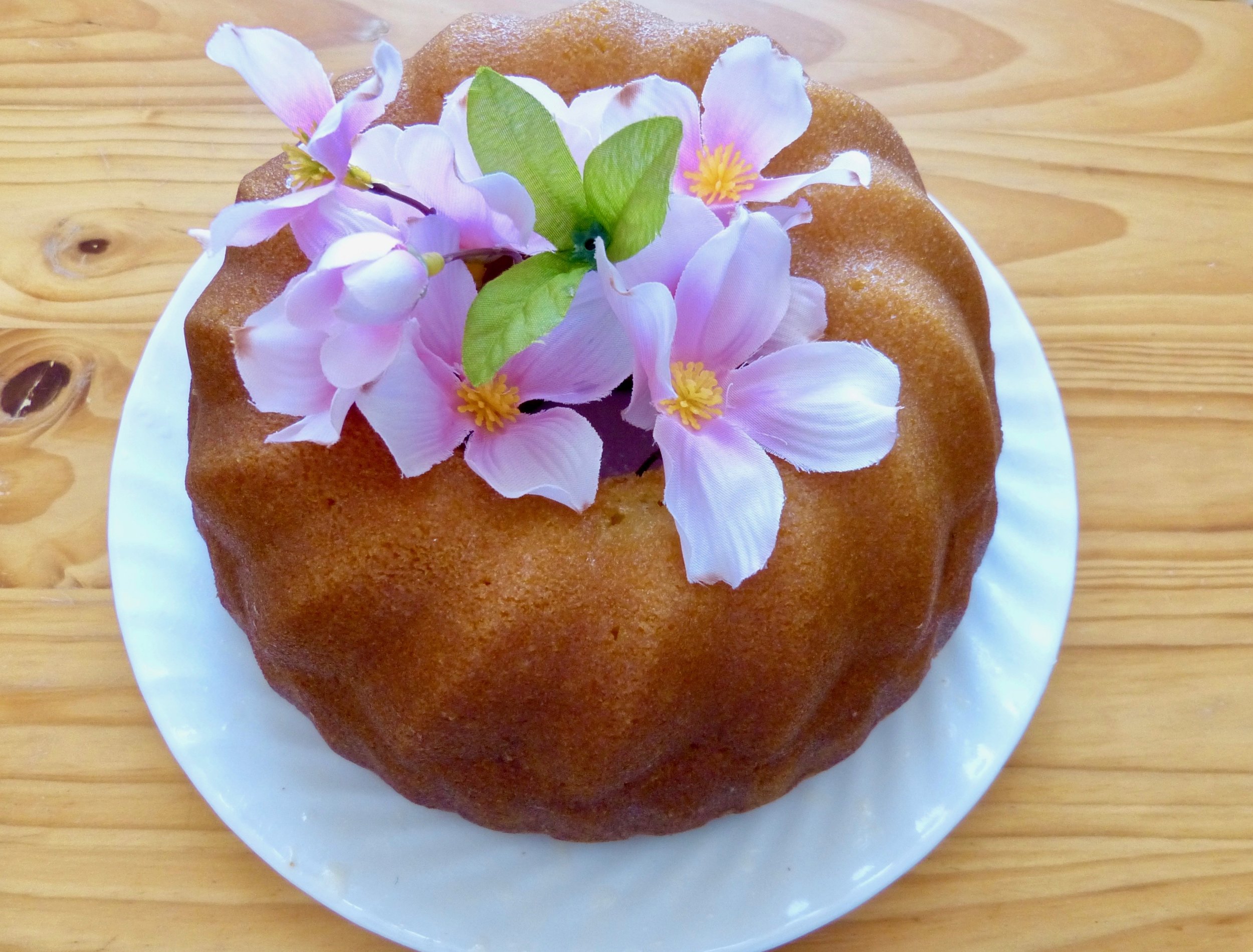A luscious lemony pound cake would be a perfect dessert to serve for your Easter guests. Lemon always brings with it a sense of freshness and lightness. This cake uses any 12 cup tube pan, and utilizes fresh grated lemon peel in the cake, and the cake is topped off with a yummy lemon glaze. Two small lemons will do quite nicely for the grated rind and the juice for the glaze. An added bonus? A lovely scent of lemon as you grate the rind. Just make sure you bring everything to room temperature before you begin. You can also decorate this cake any way you like, from a simple dusting of powdered sugar to filling the centre hole with flowers (use silk or non-poisonous ones) like pansies or violets for example. It will make a beautiful centrepiece for your table, too!
Ingredients:
1 1/2 Cups sugar
1 Cup butter
4 Eggs
1 Tbl. Grated lemon peel
3 Cups all purpose flour
1 tsp. Baking powder
1 tsp. Salt
1/2 tsp. Baking soda
1 Cup milk
For the Glaze:
1/3 Cup sugar
1/4 Cup lemon juice
2 Tbl. Butter
Method:
Heat oven to 350. Generously grease your 12-cup tube pan, I used the spray oil with flour added. In large bowl, beat the sugar and butter with electric mixer on medium speed until light and fluffy. Scrape bowl occasionally. Add eggs, one at a time, beating well after each addition. Stir in lemon peel.
On low speed, beat in flour, baking powder, salt, baking soda and milk until smooth, ending with flour, scraping bowl occasionally. Pour batter into pan.
Bake 50 to 60 minutes, I found it leaned more toward 60, but every oven is different. Insert a toothpick or skewer in centre; make sure it comes out clean. Cool in pan 15 minutes. Place heatproof plate upside down over pan (you might want to loosen a little first around the edges and the centre, give a light shake to see if it is loose), turn plate and pan right side up. Remove pan.
Meanwhile, in a glass measuring cup, combine the sugar, lemon juice and butter. Heat until the butter is melted in a microwave, about two 30 second shots should do it, or you can also do this in a small stainless pan on the stove.
With a skewer or toothpick, prick the top and sides of the cake. Brush the still warm glaze over the cake, allowing it to soak in. Cool completely about 1 1/2 hours before serving. Garnish as desired.
Photo by Sue Van Slooten
You can follow my further adventures, with more recipes, at svanslooten.com. Feel free to email me at susan.vanslooten@icloud.com if you have a question. Happy baking!





























